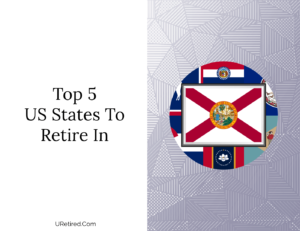If you’re considering spending your golden years in the vibrant and culturally rich country of Mexico, you’ll be pleased to know that healthcare here caters to the needs of retirees quite effectively. The article “How Does Healthcare Work For Retirees In Mexico?” delves into the various aspects of the healthcare system, including both public and private options, costs, facilities, and the quality of medical care available to you as a retiree. By understanding these elements, you’ll be better equipped to make informed decisions about your healthcare while enjoying your retirement in this beautiful destination.
How Does Healthcare Work For Retirees In Mexico?
Have you ever wondered what healthcare would look like if you decided to retire in a country like Mexico? It’s a big decision to move abroad, especially when your health and well-being are on the line. Let’s delve into what you can expect!
Check out our recommended retirement gifts!
An Overview of Mexico’s Healthcare System
Mexico offers a mix of public and private healthcare options. Whether you decide to go through the public system or prefer private healthcare, each has its own set of advantages and disadvantages.
Public Healthcare
Mexico’s public healthcare system is primarily divided into two main segments: IMSS (Instituto Mexicano del Seguro Social) and INSABI (Instituto de Salud para el Bienestar). These institutions ensure that anyone living in Mexico, including retirees, has access to affordable healthcare.
IMSS
IMSS is typically aimed at working individuals and their families. However, retirees can opt into this system by paying an annual fee, providing an affordable healthcare option.
INSABI
INSABI, on the other hand, replaced the Seguro Popular and aims to offer healthcare to those who are uninsured or cannot afford private healthcare. It’s a free system but can sometimes lack the amenities and speed that retirees might be used to in their home countries.
Private Healthcare
Private healthcare in Mexico is another viable option for retirees. While it requires out-of-pocket payments or private insurance, you’ll find a high standard of care, reduced waiting times, and access to well-trained medical professionals, many of whom speak English.
Cost of Healthcare for Retirees
One of the most appealing aspects of retiring in Mexico is the affordable healthcare. Here’s a breakdown of what you might expect to pay.
Public Healthcare Costs
While public healthcare is often free or low-cost, IMSS requires an annual fee. This fee can vary, but it is quite affordable when compared to private insurance plans.
| Type | Cost (Approx.) |
|---|---|
| IMSS Annual Fee | $300-$500 USD |
| INSABI | Free |
Private Healthcare Costs
Private healthcare can be more expensive, but still significantly cheaper than in many Western countries. Here’s a rough estimate of common medical services:
| Service | Cost (Approx.) |
|---|---|
| General Practitioner Visit | $30-$50 USD |
| Specialist Consultation | $50-$100 USD |
| Hospital Stay per Day | $200-$500 USD |
| Surgery | Varies, but much lower than in the U.S. |
Health Insurance for Retirees
While some retirees might rely entirely on the public healthcare system, others prefer the added security of private health insurance. Here are the main options:
Mexican Health Insurance
Many private companies in Mexico offer comprehensive health insurance plans tailored for expatriates and retirees. These plans can cover a range of services from routine check-ups to major surgeries.
International Health Insurance
If you prefer to keep your options open and maintain a sense of continuity, you might opt for an international health insurance plan. These plans are more expensive but cover you in multiple countries, not just in Mexico.
Combining Public and Private Insurance
Some retirees choose a hybrid approach, depending primarily on the public system but having a private insurance plan to cover situations where they prefer quicker, more specialized care.
Quality of Healthcare Services
Understanding the quality of healthcare in Mexico is crucial for your peace of mind. Let’s break it down by type of healthcare service.
Public Healthcare Services
While generally effective, public hospitals may experience longer wait times and limited resources. Hospitals and clinics in major cities tend to be better equipped compared to those in rural areas.
Private Healthcare Services
The quality of private healthcare in Mexico is comparable to what you might find in the United States or Europe. You’ll find well-maintained facilities, a higher standard of care, and English-speaking doctors.
Pharmacies and Medications
Pharmacies are widely available throughout the country, and many medications that require a prescription in the U.S. can be bought over the counter in Mexico. Prices for medication are typically lower as well.

Check out our recommended retirement gifts!
Accessibility and Locations
Healthcare accessibility can vary depending on where you decide to retire in Mexico.
Major Cities
In cities like Mexico City, Guadalajara, and Monterrey, you’ll find numerous healthcare facilities including public hospitals, private clinics, and specialized medical centers.
Coastal and Expat-friendly Areas
Popular retiree destinations like Puerto Vallarta, Cancun, and the Lake Chapala area also offer a good range of healthcare services, including reputable hospitals and clinics.
Rural Areas
If you’re planning to retire in a more rural location, you may find that healthcare facilities are fewer and farther between. In such cases, having a reliable mode of transportation is essential.
Emergency Services
Understanding how emergency services operate can be a lifesaver, literally.
Public Emergency Services
Emergency services are available through the public system, often liaised by the Red Cross. However, response times can sometimes be slower in less urban areas.
Private Emergency Services
Many private hospitals offer more responsive and efficient emergency services. Having private insurance often grants you access to these higher-tier emergency facilities.
Medical Tourism
It’s worth noting that Mexico is a popular destination for medical tourism, attracting individuals who seek quality healthcare at lower costs. Retirees can benefit from this same excellent care and affordability.
Common Medical Procedures
Some of the most popular medical procedures include dental work, cosmetic surgery, and bariatric surgery. These services often come at a fraction of the cost compared to the U.S. and Canada.
Legal and Administrative Considerations
Dealing with the legal and administrative aspects of healthcare in a foreign country can be daunting. Here’s what you need to know.
Residency Requirements
For retirees considering long-term stay, having either a temporary resident visa or permanent resident visa is crucial for accessing public healthcare services.
Documentation
Ensuring that all your medical records are up to date and translated to Spanish can often help in emergency situations.
Navigating the System
Understanding the local healthcare system, including knowing which hospitals offer the best care and having a translator if your Spanish isn’t strong, can make your healthcare experience much smoother.

Cultural Considerations
Healthcare in Mexico can also come with unique cultural considerations.
Language Barriers
While many doctors speak English, it’s always a good idea to learn some basic medical vocabulary in Spanish to facilitate better communication.
Traditional Medicine
Mexico has a rich history of traditional medicine, which many people incorporate with modern medical treatments. Being open to these practices can enrich your healthcare experience.
Community Support and Expat Networks
One of the biggest advantages of retiring in Mexico is the strong expat community. Many expatriate networks can offer advice and share their own experiences navigating the healthcare system.
Online Forums and Social Media Groups
Joining online expat forums and social media groups can provide real-time support and recommendations.
Local Expatriate Organizations
Organizations such as local expat clubs often organize health-related seminars and can help you connect with reliable healthcare providers.
Mental Health Services
Your mental health is just as important as your physical health, and Mexico has options for services in this area as well.
Public Mental Health Services
INSABI offers some mental health services, but they are often limited and may require long wait times.
Private Mental Health Services
Private practitioners and specialized clinics offer a more comprehensive range of mental health services, including psychotherapy and psychiatric care.
Dental Care
Dental care in Mexico is highly regarded, especially among the expat community.
Quality of Service
Mexican dentists are well-trained, often internationally educated, and offer a wide range of services from routine check-ups to complex procedures.
Costs
Dental care in Mexico can be significantly cheaper than in many Western countries, without compromising on quality.
| Service | Cost (Approx.) |
|---|---|
| Cleaning | $30-$60 USD |
| Filling | $40-$80 USD |
| Crown | $400-$600 USD |
Optical Care
Vision care in Mexico is another area where retirees can save money without sacrificing quality.
Services Available
From routine eye exams to surgical procedures like LASIK, optical care is readily available in both public and private systems.
Costs
Similar to other healthcare services, optical care is affordable. A standard eye exam might cost around $25-$50 USD, and glasses or contact lenses are equally affordable.
Retirement Communities with On-site Healthcare
Some retirement communities in Mexico offer on-site healthcare facilities which can be highly convenient.
Types of Facilities
These communities may have on-staff medical professionals, and sometimes even small on-site clinics. They provide an extra layer of security and ease for retirees.
Cost Considerations
While these communities can be more expensive, the convenience and peace of mind they offer are often worth it for many retirees.
Planning Your Move: Steps to Ensure Adequate Healthcare
Research Your Options
The first step is to thoroughly research both public and private healthcare options to find what works best for you.
Visit Ahead of Time
If possible, make a few trips to Mexico to visit hospitals and clinics to get a firsthand feel of the healthcare environment.
Arrange Health Insurance
Whether you choose a Mexican health insurance plan or an international one, ensure you have adequate coverage before making the move.
Connect with Local Expatriates
Use expat forums and local networks to gain insights and recommendations on the best healthcare providers in your chosen area.
Keep Emergency Contacts
Have a list of emergency contacts, including nearby hospitals and clinics, handy. Knowing where to go in an emergency can save valuable time.
Conclusion
Healthcare for retirees in Mexico offers a variety of options, from affordable public healthcare to high-quality private services. Understanding your needs, preferences, and budget will help you make the best decision as you embark on this exciting new chapter of your life. With careful planning and a little bit of research, you can rest easy knowing that your healthcare needs will be well taken care of in Mexico. Happy retiring!
So, are you ready to take the plunge and enjoy your golden years in beautiful Mexico?



